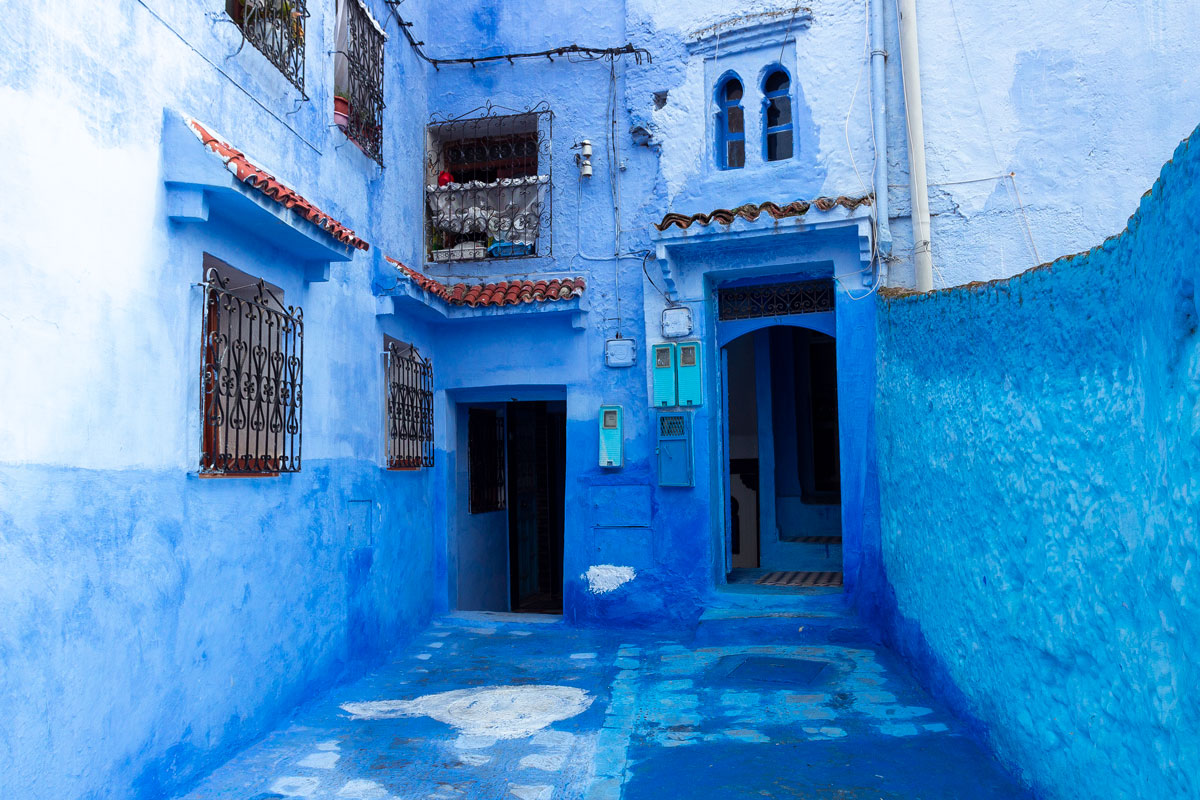Chefchaouen. The Blue City
Morocco was divided between two countries during colonial times. The southern part of the country, including Casablanca, Marrakesh, and Fez, was under French rule. The northern part of Morocco was under the protectorate of Spain.
Spanish Morocco stretched out in a narrow strip along the northern coast of the country. One of the remote towns of the colony was Chefchaouen, located on the slope of a mountain range.

Chefchaouen would have been quite unremarkable if it weren’t for the blue color with which it is entirely painted.

But since Chefchaouen is indeed painted in blue, tourists flock to the city.

They all want to see how Chefchaouen is painted in blue.

Tourists come, look, and say, “Wow, it really is blue!”

Of course, nobody knows for sure why Chefchaouen is painted in blue. It is said that in 1492, Spanish Jews fled to the city, and they came up with the idea to paint the town in the color of the sky, as a way to remind them of God.

Another theory claims that the Jews fled not from Spain but from Germany, and not in 1492 but in the 1930s.

According to the third version, Chefchaouen was painted blue to repel mosquitoes. Allegedly, mosquitoes are afraid of the color blue because it reminds them of the Jewish God.

It is strange that nobody considers the most obvious hypothesis.

Chefchaouen was painted blue because it is beautiful.

Later on, it was discovered that tourists also flock like mosquitoes to the blue color.

It’s always more pleasant when something not only looks beautiful but also brings in money, isn’t it?

Behind the Blue City, there is absolutely no soul. The stories about Jews are more beautiful than one another. The history of the city itself simply does not exist—Chefchaouen is unremarkable except for the blue color.
Yes, indeed, everything here is painted in blue. A giant paint can tipped over and spilled not only on the walls and sidewalks. The blue splattered trees, cars, carts, boxes, and even clothing.

So what? The Blue City holds no value. It hasn’t even been listed by UNESCO, although a similar blue town inside the Rabat fortress and at least 8 other places in Morocco have been included.

The local residents in Chefchaouen are so tired of tourists that they refuse to be photographed. When I tried to take a picture of this Berber grandfather, someone caught up with me and covered the camera with their hand. Where have you seen anything like that?

When I was capturing the architecture, a woman was climbing up the stairs towards me. Although she didn’t even appear in the frame, as soon as she saw the camera, she turned around the corner and peeked out from behind it for about a minute until I finished taking the shot.
After that, the woman came out from behind the corner and continued walking, while I stood there for a little while longer. When she caught up to me, she started expressing her indignation in Spanish. I tried to explain that I wasn’t photographing her, but rather the architecture, but it only made her even angrier.

However it may be, spending more than two hours in Chefchaouen is unlikely to be worthwhile. And even then, only if your goal is to post a selfie on Instagram.


